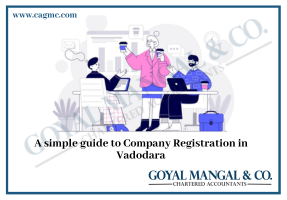
Trademark is the mark, logo, word, symbol which is used by the companies or an individual for their goods or services. So that they can be easily identified by the customer and can distinguish between the various goods. In India, a trademark is registered under Trade Mark Act,1999. Trademark registration provides the exclusive right to the owner of the mark. And the act also provides security to the owner as there are various penal provisions if the mark is used by any unauthorized person.
What is TM (™)Symbol?
The TM (™) symbol indicates the unregistered trademark. These are used by individuals or companies when they have applied for trademark registration. ™ symbol can be used after text, pictures, or other logos of the company until it is formally registered under the Act.
What is R (®) Symbol?
The R (®) symbol indicates that the trademark is registered under Trade Mark Act,1999. This means that the company or individual has all legal rights to use it. The validity of the trademark is 10 years and can be renewed. If a person or individual is not authorized to use the trademark then can be prosecuted for infringement.
Difference between ™ and ® symbol
- When the trademark is not registered and the application is filed then it will come with a ™ symbol whereas when the trademark will be registered it will come with a ® symbol.
- ™ doesn’t have legal binding whereas ® has legal binding as it is registered under the Trade Mark Act,1999.
- The symbol ™ will be used till the registration process is not completed whereas after registration ® symbol will be used by the company or individual.
What is Trade Mark Registration?
Trade Mark Registration is the process where the trademark is registered under Trade Mark Act,1999. After the registration of the mark it gives the legal right to the company or an individual to use it. And if it is used by an unauthorized person then he can be punished under the act. If the trademark is not registered under the act then no legal action can be taken if it is used by an unauthorized person. So, registration protects the trademark of the company.
Advantage of Trademark Registration
- It gives sole rights to the registered owner of the trademark.
- Given protection for a minimum period of 10 years and can be further renewed.
- Become easy for the consumer to recognize as with registration it will become a brand for the particular company.
- Help in building goodwill of the company.
- Gives legal protection to the registered owner of the trademark.
- It is considered an intangible asset of the company.
Who is eligible for Trademark Registration in India?
Following are eligible for Trademark Registration:
- An Individual
- Partnership Firm
- Limited Liability Partnership
- Company (i.e private or public )
- Joint Owner
- Sole Propertiorship Firm
Steps for trademark registration in India
- Applicant to search for the unique trademark which is not identical to any other mark which is already registered.
- After, that the application Form TM-A is to be filled with Trademark Registry India.
- Examination of the trademark will be done.
If the trademark is accepted unconditionally then it will be published in the trade journal.
If not accepted unconditionally then has to fulfill the condition or obligation and the will be published.
- After the publication, if anyone objects to the registering trademark have the opportunity to oppose it. If after 3-4 months there is no opposition then the trademark proceeds for registration.
- After the application proceeds for a registration certificate of registration will be issued under the seal of the trademark office.
- Registration of trademark will be issued for 10 years and can be further renewed.
Documents Requirement for Trademark Registration in India
- Information like Name, Nationality, and address of the applicant.
- Certificate of Incorporation in case of company or LLP.
- If the company is eligible for lower filing fees, the Udhyog Adhar Registration.
- A complete description of goods and services by the particular trademark.
- Trademark application requires trademark class to be mentioned but one can mention multi-class trademark application.
- The power of attorney in Form TM-48 should be signed by the applicant.
Conclusion:
™ and ® these two symbols have a different meaning. ™ is used when the registration process is going on. Whereas ® is used when the registration process is completed. So, we cannot treat them the same as they both are distinct from each other. Whereas, the registration of the trademark is also important as it provides legal security to the company. And help them to take legal action if any unauthorized person uses the mark. If the trademark of the company is not registered then it can be used by anyone and even the consumer will not trust the company. As the mark may be used by any other who is not authorized as no legal action can be taken until it is registered under Trade Mark Act,1999.







